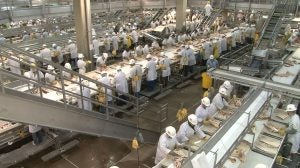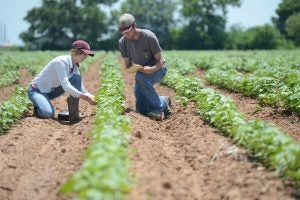The agriculture industry is facing a labor shortage, and this could lead to significant changes in the career opportunities in agriculture.
A labor shortage means that there are not enough people to fill all of the job and career opportunities available. This could be good news for those planning to pursue ag careers, but it could also create difficulties for consumers.
South Dakota State University Professor of Economics Evert Van der Sluis says that labor shortages are affecting the service industry as well, but the agriculture and food processing industries are being hit the hardest.

A recent survey from Purdue University and the CME Group reported that 66 percent agricultural employers are having difficulty finding workers to fill ag jobs.
Van der Sluis says that this shortage has been happening for decades, but was exacerbated by the COVID-19 pandemic.
In 2015, Purdue University estimated that 40 percent of new ag jobs go unfilled each year, and their most recent study estimates that from 2020 to 2025, there will be 59,400 job openings in agriculture annually.
One reason to explain this labor shortage is population loss.
“The results from the 2020 census show that we continue to see population losses in rural areas,” Van der Sluis says.
Van der Sluis believes that people are moving where there are better benefits and economic opportunities. The shortage could also be affected by other economic and social factors, including things like access to affordable housing and job flexibility.
Denise Reeser, a farm business management instructor at South Central College in Minnesota says, “As this is a rural problem, many don’t see the earning potential in small, rural areas and gravitate towards urban centers.”

Ellen Poeschl is the project director for the National Association of Agricultural Educators Teach Ag campaign, which has a goal of ensuring a supply of quality agriculture teachers. She says that job positions exist across the board, but the biggest need is in technical agriculture areas, including jobs like agronomists, truck drivers, farm laborers and researchers.
She thinks that a lack in ag education is another reason for the labor shortage.
The National Association of Agriculture Educators latest data shows an increase in demand for agriculture teachers, but there is still a lack of available and experienced teachers to fill these job positions.
Another problem that contributes to the labor shortage is that people in the ag industry don’t know how to reach job candidates.
“Many of the farmers I work with have a hard time finding workers and don’t know how to reach potential workers either,” Reeser says.
Luckily, there are many solutions to this large problem.
“If you observe a shortage in a labor market, there is a simple solution for that,” Van der Sluis says. “That is simply to provide better economic opportunities.”
The main way to address this shortage would be a large change in the ag industry. If the agriculture industry can find ways to increase wages, provide benefit packages, provide more job flexibility or even provide better working conditions, more people would want to pursue agricultural careers.
Poeschl says that education and providing students with opportunities to learn about ag careers is another solution.
“Awareness of opportunities and engaging with professionals in ag will increase interest in agriculture careers,” she says.
Connecting high school and college ag students with quality mentors of all backgrounds and positions, promoting all types of ag careers regardless of education level required, and providing internships in ag through high school programs would help.

Making post-secondary education more affordable and accessible would also be helpful, says Reeser. She also believes that a mandatory job shadowing and mentoring program would help as many high school students don’t know what they want to do.
The amount of labor in agriculture is also greatly affected by immigration policy.
“It’s difficult to find Americans who are willing to take on these jobs at the given wages and benefits,” Van der Sluis says. “If we can’t find Americans at given wages, then we need to tap into another pool of workers, and that would be immigrants.”
Reeser agrees, by allowing workers from outside our country to become productive citizens, we could fill some of the shortage.
Van der Sluis, Reeser and Poeschl all agree that the ag industry needs to find a new way to market itself and emphasize the inclusivity of agriculture. The ag and food system needs to try to make the industry more attractive to people looking for careers.
“One of the biggest challenges ag faces in attracting future agriculture employees is inclusion, diversity and equity,” Poeschl says. “To attract talent at all levels, ag has to be a welcoming and safe place where people are celebrated and accepted as they are. Even if we attract more talent if they don’t feel accepted they won’t stay.”
This labor shortage might mean difficulties for consumers and agricultural businesses, but it might be a good thing for those planning to pursue ag careers.
This labor shortage means increased demand for almost all ag jobs, making it easier for people to find jobs that interest them.


